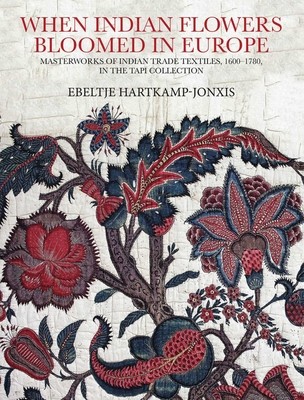
- We will send in 10–14 business days.
- Author: Ebeltje Hartkamp-Jonxis
- Publisher: Niyogi Books
- Year: 2022
- ISBN-10: 9391125174
- ISBN-13: 9789391125172
- Format: 21.4 x 28.6 x 1 cm, kieti viršeliai
- Language: English
- SAVE -10% with code: EXTRA
Reviews
Description
- Discover how Indian handcrafted textiles, such as dye-painted chintzes and embroidered palampores, made their way to Europe and inspired European textile manufacturing - An in-depth study of 30 unique textile items from the 17th and 18th centuries in the TAPI Collection, as well as similar pieces in museums around the world - A sumptuous visual delight featuring superb samples of heritage handcrafted Indian textiles and embroidery It is a fascinating story that the merchant companies of Europe, established with the aim of sourcing exotic eastern spices, stumbled upon Indian handmade textiles and found these a highly profitable product for their home markets. This process was to have far-reaching consequences for colonial history. In When Indian Flowers Bloomed in Europe the author takes us on a tour of 30 masterpieces of Indian textiles from the TAPI Collection, commissioned by European patrons in the 17th and 18th centuries. Presented here are outstanding examples of large, intricately hand-drawn, dye-painted cotton chintzes made in the Coromandel Coast, and embroidered palampores and garment pieces made in Gujarat and the Deccan. Textiles made for Dutch and British patrons demonstrate the aesthetic high point achieved by Indian artisans in the 17th and 18th centuries. Indian patterned cottons such as these, with their infinite variety of floral motifs, left a profound and enduring impact on textile designers in the western hemisphere, unexpectedly setting the stage for the Industrial Revolution. The informative text is accompanied by rarely seen images from museums and private collections, offering fresh insights into these iconic examples. Three essays followed by individually explained catalog entries for each textile add to a greater understanding of an important, historical phase in the development and global recognition of India's textile art, now preserved in museums and collections worldwide as a testament to the handiwork of the skilled artisans of India.
EXTRA 10 % discount with code: EXTRA
The promotion ends in 23d.19:22:13
The discount code is valid when purchasing from 10 €. Discounts do not stack.
- Author: Ebeltje Hartkamp-Jonxis
- Publisher: Niyogi Books
- Year: 2022
- ISBN-10: 9391125174
- ISBN-13: 9789391125172
- Format: 21.4 x 28.6 x 1 cm, kieti viršeliai
- Language: English English
- Discover how Indian handcrafted textiles, such as dye-painted chintzes and embroidered palampores, made their way to Europe and inspired European textile manufacturing - An in-depth study of 30 unique textile items from the 17th and 18th centuries in the TAPI Collection, as well as similar pieces in museums around the world - A sumptuous visual delight featuring superb samples of heritage handcrafted Indian textiles and embroidery It is a fascinating story that the merchant companies of Europe, established with the aim of sourcing exotic eastern spices, stumbled upon Indian handmade textiles and found these a highly profitable product for their home markets. This process was to have far-reaching consequences for colonial history. In When Indian Flowers Bloomed in Europe the author takes us on a tour of 30 masterpieces of Indian textiles from the TAPI Collection, commissioned by European patrons in the 17th and 18th centuries. Presented here are outstanding examples of large, intricately hand-drawn, dye-painted cotton chintzes made in the Coromandel Coast, and embroidered palampores and garment pieces made in Gujarat and the Deccan. Textiles made for Dutch and British patrons demonstrate the aesthetic high point achieved by Indian artisans in the 17th and 18th centuries. Indian patterned cottons such as these, with their infinite variety of floral motifs, left a profound and enduring impact on textile designers in the western hemisphere, unexpectedly setting the stage for the Industrial Revolution. The informative text is accompanied by rarely seen images from museums and private collections, offering fresh insights into these iconic examples. Three essays followed by individually explained catalog entries for each textile add to a greater understanding of an important, historical phase in the development and global recognition of India's textile art, now preserved in museums and collections worldwide as a testament to the handiwork of the skilled artisans of India.


Reviews